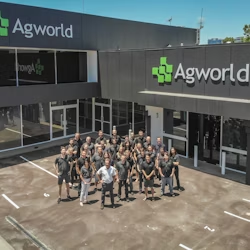Anyone that wears glasses, or contacts like I do, will be familiar with the feeling of getting a new set of glasses with improved correction and no scratches; oh man, doesn’t that make everything look clearer! It is this exact feeling that was described to me recently by a grower who, for the first time, was able to see exactly what happens on his farms. Him being able to see how much he had spent on his crop this far, his projected spend for the rest of the season, and which jobs need to be completed when, turned him from a ‘dinosaur to digital farmer’ in his own words. So, what does visibility in agriculture look like in 2019?
With increasing complexity of farming operations due to more regulatory demands, compressed margins and, in many cases, a larger scale of operations, the need for growers to know exactly where they stand at any given point during the season has increased as well. And not only do growers have more need for accurate information, their farming partners such as agronomists, input suppliers and financial service providers do too.
In the 20th century most of the record keeping used to get done on paper and communication was centered around phone calls, faxes or CB-radio. This has changed a lot since most of us gave our last 10-7 and switched to mobile phones. By using cloud-connected smart phones in combination with computer-based software, growers and their suppliers have been able to channel multiple modes of record keeping and multiple ways of communication into one platform that takes care of all of these tasks and that negates the need to enter data twice or to separately communicate data to stakeholders that has already been entered.
As with any technological advancement, however, there have been early adopters as well some growers and stakeholders that have not made a switch yet. With all the proven benefits, why is it that not everyone has taken advantage of one of the many new platforms available?

Got what it takes to join the Agworld team? We’re looking for talented individuals to help us deliver innovative solutions in agriculture.
Well, I think this is similar to when you visit your optometrist and before your appointment you feel like you see everything just fine; it’s only afterwards that you realize what you haven’t seen all that time. Once growers, agronomists, financial advisors and others have realized what it is like to collaborate on the same platform and work through the season in a coherent digital way, they tend to be hooked.
Risks are mitigated by pre-season planning and budgeting, while in-season visibility provides peace-of-mind that all the necessary tasks have been performed, that everything is up to regulatory standards and that expenditure is tracking what was budgeted. And the best part? In-field data such as observations, scouting data, vegetative index data and all sorts of other layers are able to be collected and stored along the way on most platforms, so they can be used for future reference and to improve the decision-making process even further! So even though your health insurer probably won’t cover this kind of ‘new prescription’; it still pays to regain 20/20 vision!





